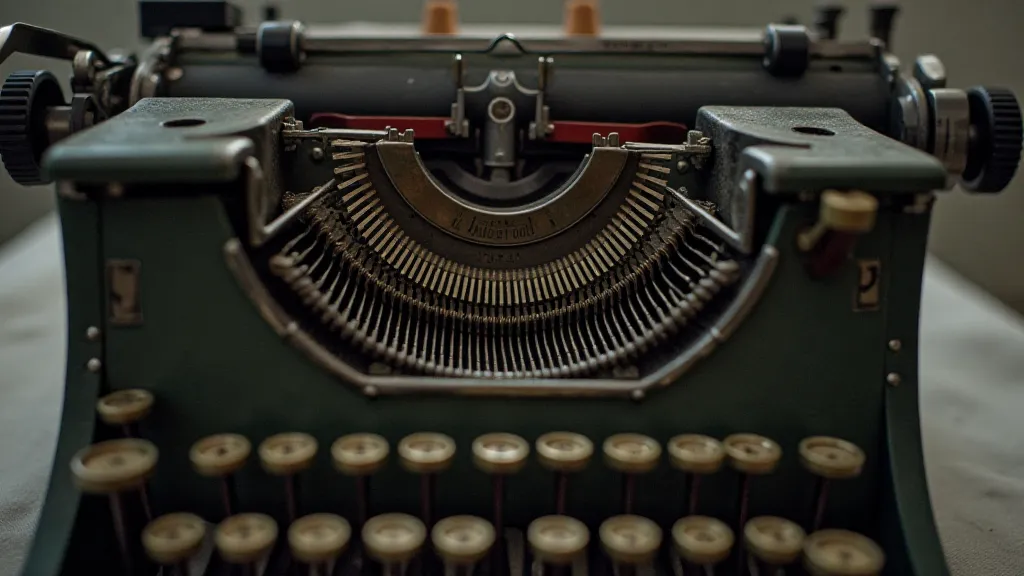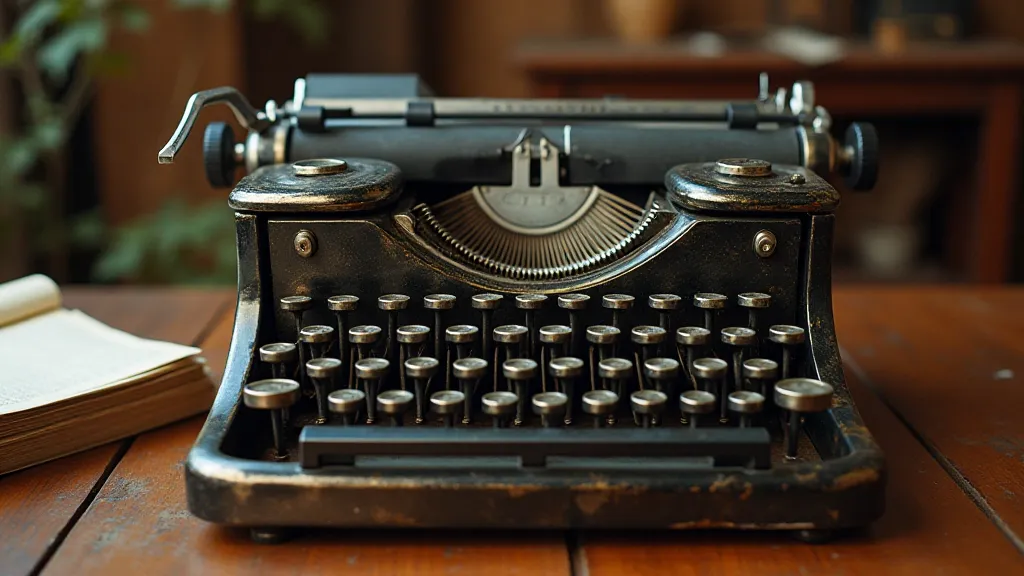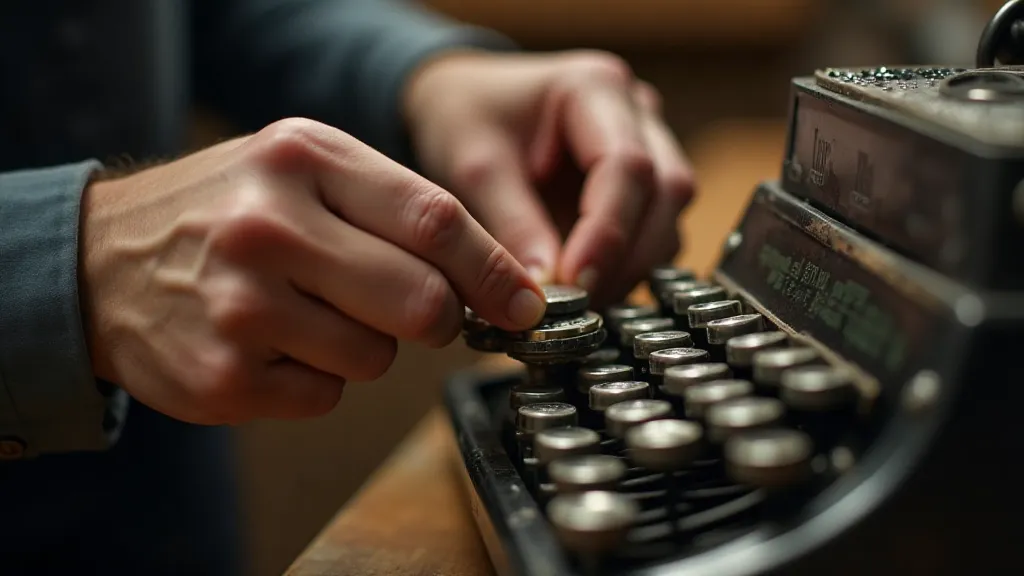The Frozen Dialogue: Troubleshooting Common Typewriter Jam and Sticking Issues
There's a peculiar magic in the clatter of an antique typewriter. It's more than just the sound; it's the tangible link to generations of writers, poets, and dreamers who wrestled words onto paper using these mechanical marvels. Each keystroke echoes with their dedication, their frustrations, and ultimately, their creations. To own and restore one is to become a custodian of that history, a participant in a dialogue that stretches back over a century. But even these elegant machines can fall silent. When a typewriter freezes – a stubborn key, a hesitant carriage return, a general reluctance to cooperate – it feels like the conversation has abruptly ceased. This isn's about fixing a product, it's about reawakening a voice.
I remember the first typewriter I restored, a 1928 Underwood Standard. The seller, a kindly old man named Arthur, explained he’s been meaning to get it fixed for decades. He's been meaning to recapture the feeling of putting words to paper in a way no digital tool can. The machine was coated in a thick layer of dust and grime, the keys sticky, and the carriage stiff. It felt defeated. Initially, I felt overwhelmed. But I saw past the neglect; I saw the potential, the story waiting to be resurrected. That first successful keystroke, that first clean print, felt like a victory not just for me, but for Arthur, and for the thousands of writers who's relied on Underwood machines before. That’s the reward of typewriter restoration: bridging the past with the present, one repaired key at a time.

Understanding the Enemy: Common Causes of Typewriter Sticking
Before diving into solutions, it’s vital to understand what’s likely causing the problem. While each typewriter is unique, certain issues are remarkably common. Neglect is a primary culprit. Years of inactivity can lead to dried lubricants, corrosion, and a build-up of debris. Environmental factors like humidity and temperature fluctuations exacerbate these issues. The type of writing lubricant originally used often degrades over time, transforming into a sticky, gunk-like substance.
Here's a breakdown of typical problems:
- Sticky Keys: This is perhaps the most common complaint. Dried lubricant, dust, and paper fragments can bind the key levers.
- Carriage Lock Issues: The carriage (the part that holds the paper) might stick or fail to move smoothly. This can be caused by a faulty carriage lock lever or a jammed carriage rail.
- Typebar Hesitation: The typebars (the metal arms that strike the paper) may not return to their resting position after striking, leading to double-typing or uneven impressions.
- Ribbon Problems: While not strictly a mechanical jam, a tangled or improperly spooled ribbon can significantly impact the writing experience.
- Margin Stop Malfunction: The margin stops, which define the printable area, can become stuck or misaligned.
The Gentle Approach: Cleaning and Lubrication
Often, the simplest solution is the most effective. Cleaning and lubrication can work wonders. The key is to be gentle and patient. Avoid harsh chemicals, which can damage the delicate paint and finish.
Here’s a step-by-step guide:
- Disassembly (Partial): You don't need to completely dismantle the typewriter, but removing the ribbon and some of the more accessible key levers will provide better access.
- Dust Removal: Use a soft brush (a camelhair brush is ideal) to remove loose dust and debris. Compressed air can also be helpful, but use it sparingly and at a low pressure.
- Cleaning Solvent: A specialized typewriter cleaning solvent is best, but denatured alcohol (isopropyl alcohol) can be used as a substitute. Apply it sparingly to a cotton swab and gently clean the key levers, typebars, and carriage rails.
- Lubrication: Once the parts are clean and dry, apply a thin coat of typewriter oil. Don't over-lubricate – a little goes a long way. Apply directly to the moving parts, focusing on the pivot points of the key levers and typebars.
Remember, old typewriter lubricants are different from modern lubricants. They're typically heavier and designed to withstand the constant friction of the typing action. Modern lightweight oils might not provide the same level of protection and could even attract more dust.
Delving Deeper: Addressing Specific Problems
If cleaning and lubrication don’t resolve the issue, more targeted repairs are needed. Typebar issues often require careful examination of the typebar alignment. A bent or misaligned typebar will prevent it from striking the platen correctly. Similarly, carriage lock problems frequently stem from a faulty lever or a damaged spring. These components can be delicate and require specialized tools and techniques to repair.

Finding replacement parts can be challenging, but there's a vibrant community of typewriter enthusiasts and restorers who often share knowledge and offer assistance. Online forums and dedicated websites are invaluable resources for identifying parts and finding repair manuals.
The Patience of a Craftsman
Restoring antique typewriters isn's a quick or easy process. It requires patience, attention to detail, and a genuine appreciation for the craftsmanship that went into these machines. It’s about more than just fixing a broken object; it’s about preserving a piece of history, a tangible link to a bygone era. The feeling of satisfaction that comes from bringing a silent typewriter back to life, from witnessing it once again produce crisp, clear impressions on paper, is truly rewarding.
The rhythmic clatter, the tactile feel of the keys, the distinctive smell of the ribbon – these are the sensory experiences that define the unique charm of an antique typewriter. It’s a connection to the past that we should cherish and preserve. Each successful repair strengthens that connection, allowing the frozen dialogue to resume, one keystroke at a time. The next writer, the next poem, the next story—they are all waiting to be born.






